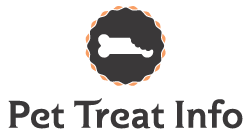With all the news about pet food recalls and sick pets, it can be a scary challenge trying to find the best food for your furry friends. Fortunately, there are now loads of websites out there that rate and research pet food for you, so you’ll know what your pet is eating and what dangers are out there. That’s all well and good, but not all websites are out to help you.
Some are only in it for the money and can mislead you, causing you to make a decision without the best information. Let’s take a look at what a pet food advisor website is, what it can do for you, what to look for and what to be aware of.
Valuable Sources of Information
The Humane Society of the United States@HumaneSocietyWe’re urging Congress to revise the definition of food in the Supplemental Nutrition Assistance Program (SNAP) to include pet food. It makes no sense to limit the discretion of food-stamp recipients trying to keep their families together, including pets. http://bit.ly/2Dz6BtM
273
All of this information is great, but do you really need it? The answer to that question is ultimately up to you, but it’s a good idea to at least take a look. Making informed decisions on what your pets eat is one of the best ways to ensure that they live long, happy and active lives.
Maybe you already put a lot of thought into your dog or cat’s food. You carefully check the labels of the pet foods you buy, and you even look at the manufacturer’s websites. You also feed your dog exclusively vet recommended dog food. This hard work, sadly, is not enough. Pet food labels are often misleading or deliberately leave important information out so that consumers don’t know about their dirty little secrets.
Information You Need Not to Get Duped
Why would pet food companies do this? Well, manufacturers are often big business who are always on the lookout for ways to cut costs. These cost-cutting measures usually come in the form of cheap and poorly sourced materials. Sub-par or expired animal parts, dangerous additives, and preservatives are all things pet foods may contain that the manufacturers don’t want you to know about.
These pet food companies can get away with this because pet food is much less regulated than human food. Manufacturers just aren’t held as accountable when it comes to disclosing their ingredients or food making processes. Ingredients that are deemed unsuitable for humans are allowed in pet foods because there just isn’t as much outcry for regulation.
For example, Ethoxyquin is a preservative with possibly dangerous side effects. It cannot be added to food for humans, but it can be added to pet foods. Furthermore, a pet food manufacturer can claim that it adds no Ethoxyquin to its food, but still be allowed to use ingredients treated with the preservative in their pet foods. They aren’t adding it directly so in the eyes of the law it is OK, and they can claim “No Ethoxyquin!” on their packaging.
These kinds of dishonest practices can have dire consequences. In 2007, there was a highly publicized recall of dog and cat food. Several pet food companies had acquired wheat gluten from China that was contaminated with Melamine, a toxic substance used in the creation of certain plastics and used as fertilizer in developing nations. The contaminated food reportedly caused the deaths of thousands of pets. This event was actually one of the primary reasons many pet food advisor websites started up.
Not All Altruistic Saints
Image CC by 2.0, by Carmella Fernando, via Flickr, cropped
Now you are probably thinking, “Great! I’ll look at these sites and find the best food for my pet with all this great information!” Hold that thought, though; there is a dark side to all of this. It is a sad truth, but not everyone on the internet is honest. Shocking, I know. This harsh reality extends to many pet food advisor websites claiming to provide information out of the goodness of their hearts.
As with many things, it all comes back to money. Some websites stand to make a tidy profit from the pet food manufacturers they claim to research. Not only that, but some sites are run or are funded by the companies themselves! These “informational” websites become powerful marketing and PR tools for the pet food industry.
Here’s how it works. A pet food manufacturer contacts a “pet food advisor” website about their new line of dog food for senior dogs. They promise kickbacks for a favorable review of their product. The website spins the information and makes the brand in question look favorable, as well as leaving out all the nasty details the manufacturer wants to be covered up. They then proclaim this brand is “The Best Senior Dog Food!” and provide a link to the manufacturer’s website.
Some go about it more stealthily. Big pet food companies offer “free samples” and “gifts” to the proprietors of the pet food advisor website. That way, they build rapport and a favorable relationship with the advisor site, so they are looked on more favorably. It isn’t an honest practice, but for the most part, it is legal.
How to Tell the Difference
Image CC by 0, via Pixabay
So, how do you tell the good sites from the bad? Research and diligence. I know avoiding doing that stuff is one of the reasons people go to these advisor sites, but once you find a good site you can stick with, your work (hopefully) is over.
The People
The first thing you want to do is find out who is running the website. Of course, it is best to trust the experts like vets and scientists, but don’t stop reading after you see “DVM.” First of all, there’s no way to back up a claim about medical credentials without research, so don’t trust everyone in a lab coat. Second, vets are humans too. They are subject to temptation and corruption just like the rest of us. The vast majority of doctors, scientists and veterinarians are out to help people and animals, but there are bad eggs just like everywhere else.
Also, don’t discount the work of a concerned citizen. Just because they don’t have a veterinarian degree, doesn’t mean they can’t advise you on pet food. A lot of the information needed to vet (pun not intended) the quality of dog food is publicly available and can be researched by anyone. It doesn’t take eight years of veterinary school to investigate a company’s practices and history. Just a concerned and diligent good Samaritan.
The Information
After you know who runs the site, it’s time to look at their information and how they get it. They should be getting their information from a variety of reliable sources like consumer reports, journalistic articles and the labels and information provided by the pet food company. Good advisors also get information from trusted sources like industry whistleblowers and industry thought leaders. If the website doesn’t come out and say where they are getting their information, they may have something to hide.
The Money
Finally, follow the money. Every website needs to make money somehow. Hosting, bandwidth and the time it takes to maintain the site all cost money. You want people invested in the success of their site; it makes them work harder. But the source of the money is what is important here.
An abundance of ads is the first sign that a pet food advisor might not be entirely independent. If their review page has direct links back to a manufacturer’s website, that may also be another red flag. The site should disclose where they get their money from in an official statement.
Knowledge is Power
You care for your pet, that’s why you are reading this. You know that it is worth the time and effort to make sure your furry friend is living its best life. The information found on pet food advisor websites can help you with this by giving you detailed information and safety news about the food you feed your pets. Just make sure the information is coming from a good place, and not a corporate mouthpiece.











